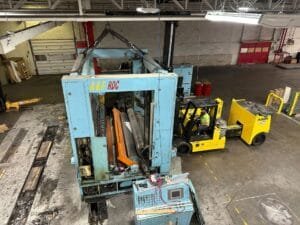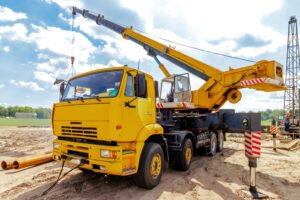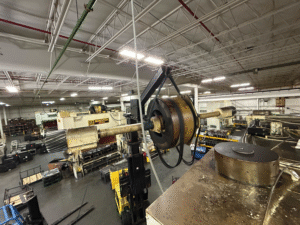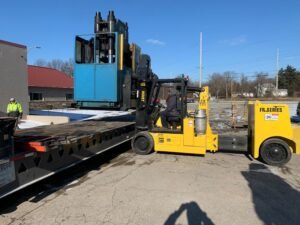Relocating heavy equipment is an unavoidable necessity for many businesses that rely on large-scale machinery to maintain operations. Whether you are moving construction cranes across states, relocating factory equipment to a new plant, or shifting energy-generation assets to a new facility, such projects come with immense logistical and financial challenges.
The biggest challenge, however, is not always the engineering or logistics—it is often financing. The cost of heavy equipment relocation ranges widely depending on the type of equipment, the distance, the method of transport, and the level of dismantling or reinstallation required. For some businesses, costs can run into millions of dollars, which makes financing an essential part of the planning process.
This article explores in depth the financing options for heavy equipment relocation projects, why financing is necessary, how to evaluate different options, tax considerations, common risks, and best practices. It will also highlight how the right relocation partner plays a critical role in ensuring value for money.
Why Heavy Equipment Relocation Requires Financing
Before diving into the financing structures available, it’s important to understand why financing is often unavoidable:
-
High Project Costs
Specialized equipment movers, cranes, gantries, and logistics planning come at a premium. For instance, relocating a single CNC machine might cost $20,000–$50,000, while moving an entire production line can cross $1 million. -
Hidden or Variable Expenses
Permits, escort vehicles, and insurance coverage can vary depending on the jurisdiction and last-minute route changes. Financing ensures businesses have adequate liquidity to manage surprises. -
Cash Flow Continuity
Even profitable businesses can struggle to allocate large one-time sums. Financing spreads costs over time so daily operations remain unaffected. -
Expansion Enablement
Relocation often supports expansion or modernization. Financing allows businesses to execute projects without diverting working capital from growth activities. -
Risk Coverage
Many financing structures include insurance or warranties, offering protection against accidents, delays, or damage.
Cost Components in Heavy Equipment Relocation
To evaluate financing properly, businesses must first break down the total cost of a relocation project. Key cost categories include:
-
Pre-Move Engineering and Planning
Site surveys, feasibility studies, structural evaluations, and regulatory compliance checks. -
Dismantling and Rigging Costs
Hiring cranes, forklifts, hydraulic gantries, and professional riggers to dismantle, lift, and secure equipment. -
Transportation
Specialized trucks or trailers, permits for oversized loads, pilot cars, and sometimes sea or air freight for international moves. -
Reinstallation and Calibration
Site preparation, foundation building, electrical integration, anchoring, and performance testing of relocated equipment. -
Insurance and Liability Coverage
Policies covering equipment damage, worker injuries, and third-party liability during the move. -
Downtime Costs
The financial impact of halting operations during the relocation process.
Each of these expenses can be financed separately or bundled into a single financing structure depending on business needs.
Detailed Financing Options for Heavy Equipment Relocation
1. Traditional Bank Loans
Traditional term loans remain the cornerstone financing method for relocation projects.
-
Structure: A lump sum loan with fixed repayment terms over 3–10 years.
-
Interest Rates: Lower compared to private lending, especially for companies with strong credit profiles.
-
Collateral: Typically secured by equipment, real estate, or other assets.
-
Suitability: Best for large, established companies with predictable revenues.
Example: A steel manufacturing firm relocating its furnaces across states could use a $2M bank loan repaid over seven years, keeping cash reserves intact.
2. Equipment-Specific Loans
Banks and specialized lenders often offer loans tailored to equipment-related needs. Unlike general business loans, these use the equipment itself as collateral, which makes them easier to obtain.
-
Advantages: Faster approval, lower risk for lenders, repayment schedules aligned with project timelines.
-
Use Case: Relocation of high-value machines such as industrial presses, turbines, or medical imaging systems.
3. Leasing Options
Leasing isn’t only for acquiring new equipment—it can also support relocation.
-
Operating Lease: Best for temporarily relocating leased equipment. Costs are considered operating expenses and are tax-deductible.
-
Capital Lease: Structured similarly to a purchase, giving long-term control and ownership benefits while spreading out payments.
Benefit: Businesses avoid large upfront costs and preserve working capital.
4. Vendor Financing
Some movers, rigging contractors, or equipment manufacturers provide vendor financing.
-
How It Works: The vendor extends credit for relocation costs, bundled into the service agreement.
-
Advantages: Simpler approval, single point of contact, often includes warranties and service packages.
-
Limitations: May have higher interest rates compared to banks.
5. Government Grants, Subsidies, and Incentives
Governments often encourage businesses to relocate or modernize facilities through financial incentives.
-
Economic Development Grants: For companies moving to designated industrial zones.
-
Green Relocation Incentives: For adopting energy-efficient systems during relocation.
-
Export/Import Support: If relocation enables international trade or new market access.
These options can dramatically reduce net project costs, though application processes may be lengthy and competitive.
6. Business Lines of Credit
A line of credit provides flexibility for relocation projects where expenses fluctuate.
-
Advantages: Interest is only paid on the amount drawn, revolving structure supports phased projects, easy to reuse for post-relocation expenses.
-
Drawback: Higher interest rates compared to term loans if used extensively.
7. Sale-Leaseback Financing
This method allows companies to sell their equipment to a financial institution and then lease it back. The funds generated finance the relocation.
-
Benefits: Immediate liquidity, retain operational control, potential tax advantages.
-
Risks: Long-term leasing obligations may cost more overall.
8. Private Equity and Venture Capital
For high-growth businesses, private investors may fund relocation in exchange for equity.
-
Pros: No immediate repayment, access to strategic guidance.
-
Cons: Dilution of ownership, not suitable for all businesses.
9. Crowdfunding and Community Financing
Though unconventional for industrial projects, community bonds or crowdfunding campaigns can fund relocations that benefit a local economy by preserving jobs or revitalizing infrastructure.
10. Hybrid Approaches
Most large relocations require multiple financing sources. A business might combine:
-
Bank loans for large expenses
-
Vendor financing for rigging and dismantling
-
Lines of credit for unpredictable costs
-
Government subsidies for site development
Tax Implications of Financing Heavy Equipment Relocation
The financing method chosen affects taxation.
-
Loans: Interest payments are typically deductible.
-
Leases: Payments may be deductible as operating expenses.
-
Grants/Subsidies: Often reduce taxable income.
-
Depreciation: Relocated equipment may continue to qualify for depreciation deductions.
Consulting with a tax advisor ensures maximum benefit.
Risks of Financing Heavy Equipment Relocation
While financing eases the upfront burden, risks must be considered:
-
Over-Leverage: Too much debt may strain finances.
-
Hidden Fees: Vendor financing and leases may include unfavorable terms.
-
Project Delays: Repayments continue even if relocation is postponed.
-
Economic Shifts: A downturn can make debt servicing difficult.
Best Practices for Financing Equipment Relocation
-
Get Multiple Quotes from movers and lenders.
-
Align Financing with ROI: Ensure relocation enables growth or efficiency improvements.
-
Bundle Services: Use movers that include financing, insurance, and project management.
-
Consider Phased Financing: Use credit lines for variable costs and loans for fixed expenses.
-
Work with Industry-Specific Lenders: They understand risks and can offer favorable terms.
Industry-Specific Financing Insights
Manufacturing Sector
Relocation financing often tied to modernization. Equipment loans and subsidies for moving into industrial parks are common.
Construction Industry
Lines of credit and short-term loans dominate since construction projects are temporary.
Healthcare Industry
Vendor financing and operating leases are preferred due to the high cost of medical imaging equipment relocation.
Energy Sector
Sale-leaseback and government grants are often used, especially for renewable projects.
The Future of Financing Heavy Equipment Relocation
The landscape of financing is evolving with technology and policy shifts:
-
FinTech Lenders: Offering faster digital approvals.
-
AI-Based Credit Scoring: Speeding up loan evaluations.
-
Green Financing Models: Prioritizing sustainable relocations.
-
Integrated Solutions: Movers partnering directly with banks to provide packaged relocation + financing + insurance.
About Alltracon – Your Trusted Heavy Equipment Relocation Partner
Choosing the right partner is just as important as choosing the right financing. Alltracon stands out as one of the most trusted heavy equipment relocation specialists in the industry. With decades of experience, advanced rigging technology, and a proven safety record, Alltracon offers end-to-end solutions that minimize downtime and maximize efficiency. From planning and permits to safe transport and reinstallation, Alltracon ensures every relocation project is smooth, secure, and cost-effective. (≈50 words)
Conclusion
Financing heavy equipment relocation projects is not a one-size-fits-all decision. From traditional bank loans and vendor financing to grants and hybrid approaches, businesses have numerous tools at their disposal. The key is to align financing with strategic goals, risk appetite, and cash flow needs.
By leveraging the right financing model and partnering with experienced movers like Alltracon, businesses can relocate heavy equipment without jeopardizing financial stability—turning a daunting logistical challenge into a strategic opportunity for growth.












